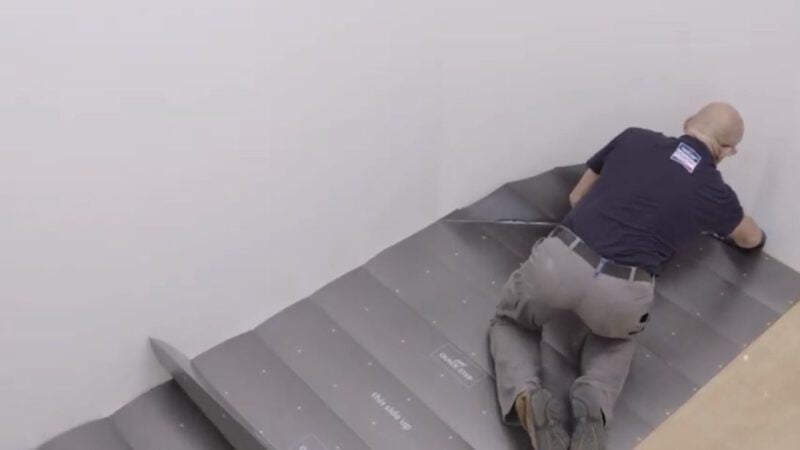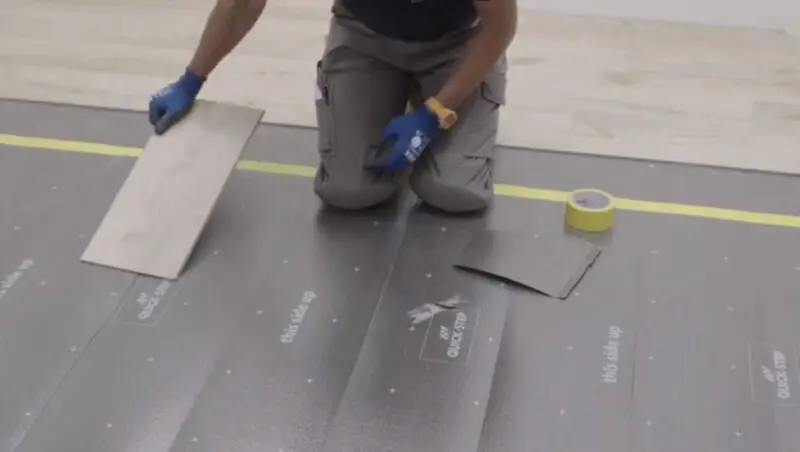
If you are here, you must be asking yourself, “Do I need underlayment for vinyl plank flooring?”
You are all set up to go with your new flooring installation and this time it’s the ravishing, luxurious vinyl one. With the gloves on and nicely tightened lace, fur boots, you are almost ready to install. But hold on for a bit! Are you missing something?
Take a few steps back and let’s just admire the overall floor of your kitchen or bathroom. Now, think about how satisfaction stable surfacing and smooth finishing will give you.
I am assuming the amount would be nothing close to meek. Everyone wants their flooring to be extra smooth and super stable. And to make that happen, you should be questioning this one thought… do I need underlayment for my flooring or should I just skip It? I’m here to sort that confusion out today.
Does Vinyl Plank Flooring Need Underlayment: Breaking It Down
Experts really support the idea of getting underlayment for vinyl flooring. Now, there are definitely reasons behind that. Do you really need to go for an underlayment or is it alright to skip that part?
I won’t give you an unexplained answer, because that’s just not right. Let’s get to know what underlayment is and when it is necessary.
What Is Underlayment?
Floor installation is all about several layers. The buffer-like component that stays between the surface and the subfloor is known as underlayment.
It usually comes as rolls of fiber boards or even plywood. And these are used to improve and enhance the stability of the flooring. The final layer for installation is the visible material while walking such as stone or tile.
The sub floor layer typically comes with several flaws and mistakes. And so, there could be issues related to these mistakes later on. Adding underlayment is a process that makes such issues go away. Especially for the acoustic performance of a floor, underlayment plays a huge role.
With an underlayment, one can ensure a comfortable underfoot feeling as well as sound reduction benefits. This also works well as a moisture barrier. Sometimes walking on concrete and hard floors can feel make you feel uneasy. And underlayment can really swipe away those discomforts. In short, with a properly done underlayment, one can feel the comfort on their feet all day.
If you have rambunctious kids or you tend to play football in your house – underlayment can make a big difference in the sounds that pass through to other levels of your house. Dampening these noises can go a long way to achieving acoustic bliss in your day-to-day life.
Moisture barrier is not a confirmed benefit with every underlayment, but some do offer this facility. Groundwater coming above the floor can eventually lead to damage and even mold. So, a moisture barrier below your floor could be an invisible blessing when nature plays afoul or accidents happen.
When Do You Need Underlayment?

The first and foremost case where you can’t skip underlayment is when it is recommended by the manufacturer of your vinyl flooring. Skipping, underlayment in this case will assuredly lead to noise problems (typically a disturbing clapping sound). This is usually caused by variations in the plank height and length. Even with 1 millimeter of variation, this irritating sound can take place.
If you are installing the vinyl planking floor over a concrete basement, moisture riding above should not be a problem. However, for the sake of air humidity control in that space, having a moisture barrier could be essential. Sometimes climate is the major reason behind such needs.
Also, vinyl is pretty soft. And so, it might need the support of hard but thin underlay to keep balance. If you choose something soft for the underlayment, there will be more chances of unstableness that could lead to unnecessary damage, sometimes puncturing.
When Should You Avoid Underlayment?
Sometimes, you need to skip underlayment beneath tile floors to avoid difficult installation. Especially when you decide to install the flooring yourself. Usually, this will save from one to four dollars for every square foot of flooring. Some products out there also come with built-in underlayment – which of course would not require an extra dedicated underlayment layer. In fact, installing underlay beneath a product with a built-in underlayment may cause problems with your warranty.
When using glue-down vinyl plank flooring, it’s not necessary to use underlayment in most cases. This might bring further problems later if you ever wish to remove the product. However, you will definitely save on the total cost to install the floor since underlayment can be skipped.
How to Install Underlayment for Vinyl Plank Flooring?
Plywood is a common underlayment choice to use for vinyl plank flooring. So, let’s go with that. With uniform dimensions and edges, these sheets are pretty much weightless. Using a circular saw, table saw, handsaw, or even jigsaw, you can simply cut the sheets.
You can install the underlayment with or without glues. But, most manufacturers these days suggest using the one without glue. This makes the installation quite simple and makes the most important part the fastening of the underlayment panels.
Air-powered staplers combined with galvanized staples work best for the process. Some even suggest using galvanized or coated screws/nails for this fastening process. It’s not okay to use any nonstandard or uncoated fastener. If you do so, get ready to be affected with discoloration, rust, and similar issues later.
Keep panels in the room of installation for at least 3 days. This will ensure minimal expansion or contraction after installation. Make sure the sub floor is cleaned nicely and thoroughly before beginning any installation.
Next, install each floor panel directly to the subfloor one at a time. Following plywood sub flooring directions, let the sheets run. However, offsetting the underlayment seams from sub flooring seams is also critical.
Fasten the underlayment sheet every two inches along the edge with staples. Away from the edges of the underlayment, 4-inch spacing is sufficient. Keeping the nails and screws a bit apart is necessary. Also, it’s best to touch the underlayment sheets together -gaps up to 1/8 of an inch are also fine. Just make sure to fill those gaps with seam filler. After the gaps are filled, your installation is complete!
Verdict – Do I Need Underlayment for Vinyl Plank Flooring?
Ask yourself once again, do I need underlayment for vinyl plank flooring or not. What’s the answer this time? I’m sure you will have a more informed answer this time. We have covered everything regarding when underlayment works best with vinyl plank flooring. Also, don’t forget my tips on the installation. I hope it helps you with the process. Good luck with your projects!

